Fomesafen
Synonym(s):5-[2-Chloro-4-(trifluoromethyl)phenoxy]-N-(methylsulfonyl)-2-nitrobenzamide
- CAS NO.:72178-02-0
- Empirical Formula: C15H10ClF3N2O6S
- Molecular Weight: 438.76
- MDL number: MFCD01632756
- EINECS: 276-439-9
- SAFETY DATA SHEET (SDS)
- Update Date: 2024-07-02 08:55:42
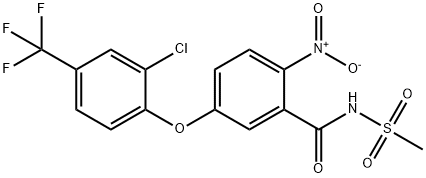
What is Fomesafen?
Chemical properties
White crystalline solid or powder.
The Uses of Fomesafen
Fomesafen is a protoporphyrinogen oxidae (PPO) inhibitor.
Definition
ChEBI: Fomesafen is an N-sulfonylcarboxamide that is N-(methylsulfonyl)benzamide in which the phenyl ring is substituted by a nitro group at position 2 and a 2-chloro-4-(trifluoromethyl)phenoxy group at position 5. A protoporphyrinogen oxidase inhibitor, it was specially developed for use (generally as the corresponding sodium salt, fomesafen-sodium) for post-emergence control of broad-leaf weeds in soya. It has a role as a herbicide, an agrochemical and an EC 1.3.3.4 (protoporphyrinogen oxidase) inhibitor. It is an aromatic ether, a N-sulfonylcarboxamide, a C-nitro compound, an organofluorine compound, a member of monochlorobenzenes and a member of phenols. It is a conjugate acid of a fomesafen(1-).
General Description
White crystalline solid. Used as an herbicide.
Reactivity Profile
Fomesafen is incompatible with acids.
Agricultural Uses
Herbicide: After July 25, 2003, flumesafen was not permitted in many countries to be used as an active ingredient on crops except to control weeds in soybean crops, and white, kidney and snap beans. Not approved for use in EU countries. Registered for use in the U.S.
Trade name
BAS 530 04®; FASTER®; FLEX®; FLEXSTAR; FOMESAFEN® SODIUM; PP 021®; REFLEX®; REFLEX® 2LC Herbicide (sodium salt); TORNADO®[C]; TWISTE®[C]; TYPHOON®
Potential Exposure
Chlorophenoxy herbicide. After July 25, 2003, flumesafen was not permitted in many countries to be used as an active ingredient on crops except to con trol weeds in soybean crops, and white, kidney and snap beans. Limited use allowed in some European countries. Incompatibilities: Slowly hydrolyzes in water, releasing ammonia and forming acetate salts.
Shipping
UN2588 Pesticides, solid, toxic, Hazard Class: 6.1; Labels: 6.1-Poisonous materials, Technical Name Required.
Waste Disposal
Do not discharge into drains or sewers. Dispose of waste material as a hazardous waste in a landfill approved and licensed for the disposal of pesti cides. Consult with environmental regulatory agencies for guidance on acceptable disposal practices. Incineration with effluent gas scrubbing is recommended. Containers must be disposed of properly by following package label directions or by contacting your local or federal environmental control agency, or by contacting your regional EPA office.
Properties of Fomesafen
| Melting point: | 220-221°C |
| Density | 1.7075 (rough estimate) |
| refractive index | 1.5660 (estimate) |
| storage temp. | Sealed in dry,2-8°C |
| solubility | Acetonitrile (Slightly), DMSO |
| pka | 23-25(at 25℃) |
| form | neat |
| form | Solid |
| color | White to Off-White |
| BRN | 8165046 |
| CAS DataBase Reference | 72178-02-0(CAS DataBase Reference) |
| EPA Substance Registry System | Fomesafen (72178-02-0) |
Safety information for Fomesafen
| Signal word | Warning |
| Pictogram(s) |
 Exclamation Mark Irritant GHS07 |
| GHS Hazard Statements |
H302:Acute toxicity,oral |
| Precautionary Statement Codes |
P264:Wash hands thoroughly after handling. P264:Wash skin thouroughly after handling. P270:Do not eat, drink or smoke when using this product. P301+P312:IF SWALLOWED: call a POISON CENTER or doctor/physician IF you feel unwell. P501:Dispose of contents/container to..… |
Computed Descriptors for Fomesafen
New Products
6-Bromo 2-Iodo Indole Pyridine 2,4,6-Tricarboxaldehyde Fosfomycin EP impurity D Rimegepant Impurity 3 Ivermectin EP Impurity B 2,2-diethoxyethanethioamide (R)-tert-butyl (4-methyl-1-oxopentan-3-yl)carbamate Tubulysin C Tubulysin B (2S,4R)-4-amino-2-methyl-5-phenylpentanoic acid hydrochloride Potassium HMDS (1.0 M in THF) Fuel shell 2-[2-[3(S)-3[2-(7-chloro-2-quinolinyl) ethenyl] phenyl-3- hydroxyl propyl] phenyl]-2-propanol Imeglimin Hydrochloride IH 2-[[(3aR,4S,6R,6aS)-6-Aminotetrahydro-2,2-dimethyl-4H-cyclopenta-1,3-dioxol-4-yl]oxy]ethanol ethanedioate 2-(1-(Mercaptomethyl) cyclopropyl) acetonitrile (1R,2S)-2-(3,4-Difluorophenyl)cyclopropanamine 4,7-Dibromobenzo[c][1,2,5]thiadiazole-5,6-diamine Methyl 4-amino-3-(dihexylamino)benzoate 4-Bromo-N,N-bis(4-iodophenyl)aniline 5-Aminophthalazine 2-(3,5-Di-tert-butylphenyl)-4,4,5,5-tetramethyl-1,3,2-dioxaborolane 3,6-Bis(4-iodophenyl)-2,5-dihydropyrrolo[3,4-c]pyrrole-1,4-dione 4-bromo-7H-pyrrolo[2,3-d]pyrimidineRelated products of tetrahydrofuran
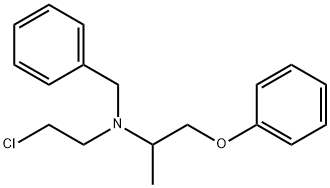
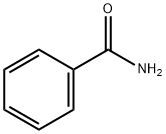
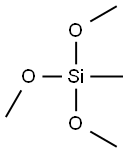

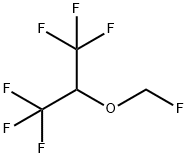



You may like
-
 Fomesafen CAS 72178-02-0View Details
Fomesafen CAS 72178-02-0View Details
72178-02-0 -
 Fomesafen 98% (HPLC) CAS 72178-02-0View Details
Fomesafen 98% (HPLC) CAS 72178-02-0View Details
72178-02-0 -
 Fomesafen 98% (HPLC) CAS 72178-02-0View Details
Fomesafen 98% (HPLC) CAS 72178-02-0View Details
72178-02-0 -
 Fomesafen CAS 72178-02-0View Details
Fomesafen CAS 72178-02-0View Details
72178-02-0 -
 Fomesafen CAS 72178-02-0View Details
Fomesafen CAS 72178-02-0View Details
72178-02-0 -
 1572177-89-9View Details
1572177-89-9View Details
1572177-89-9 -
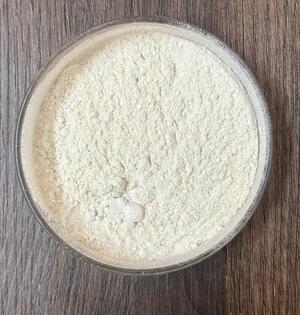 6390-09-6View Details
6390-09-6View Details
6390-09-6 -
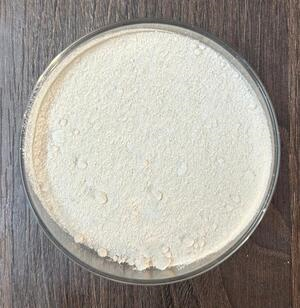 6-Bromo indoleView Details
6-Bromo indoleView Details